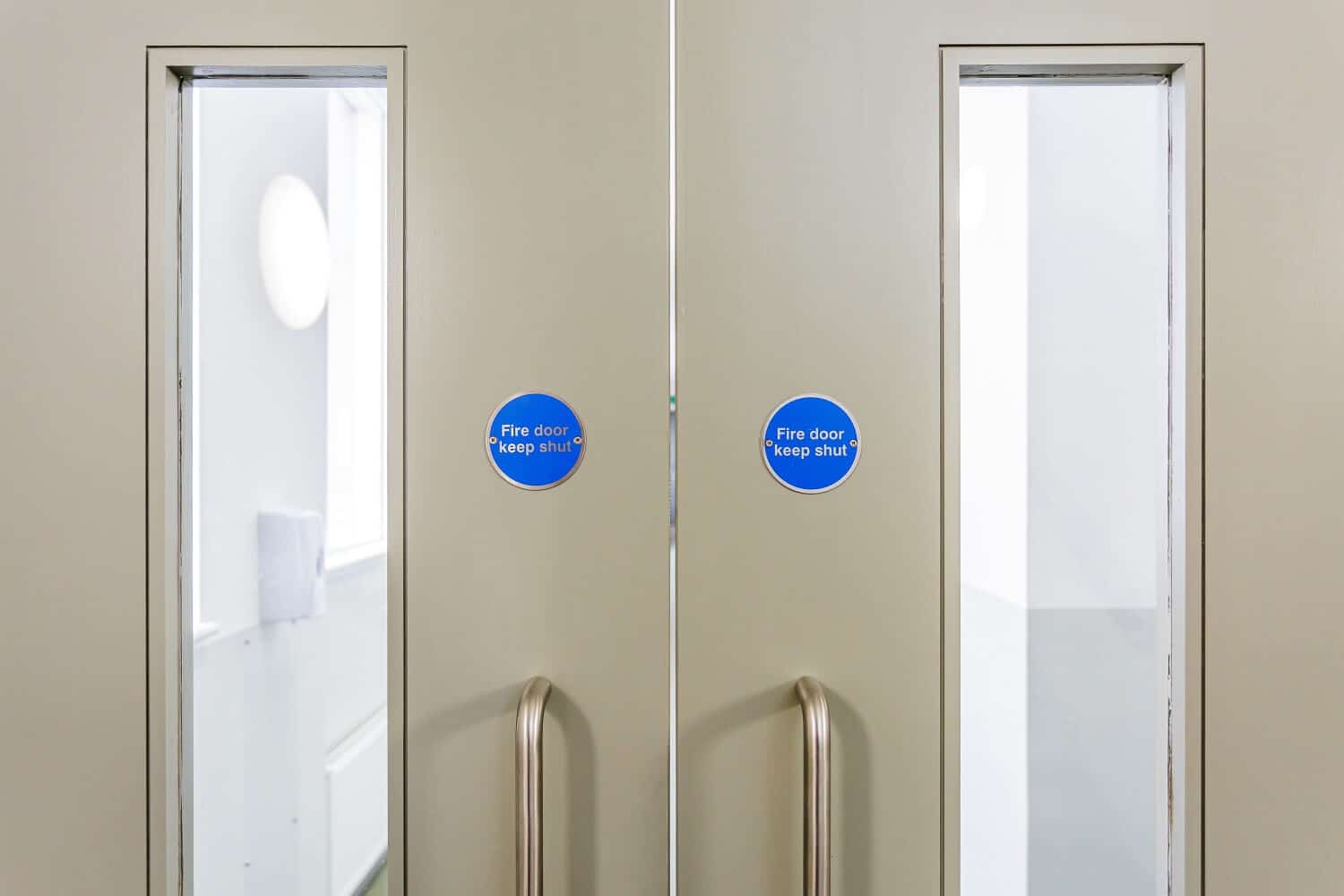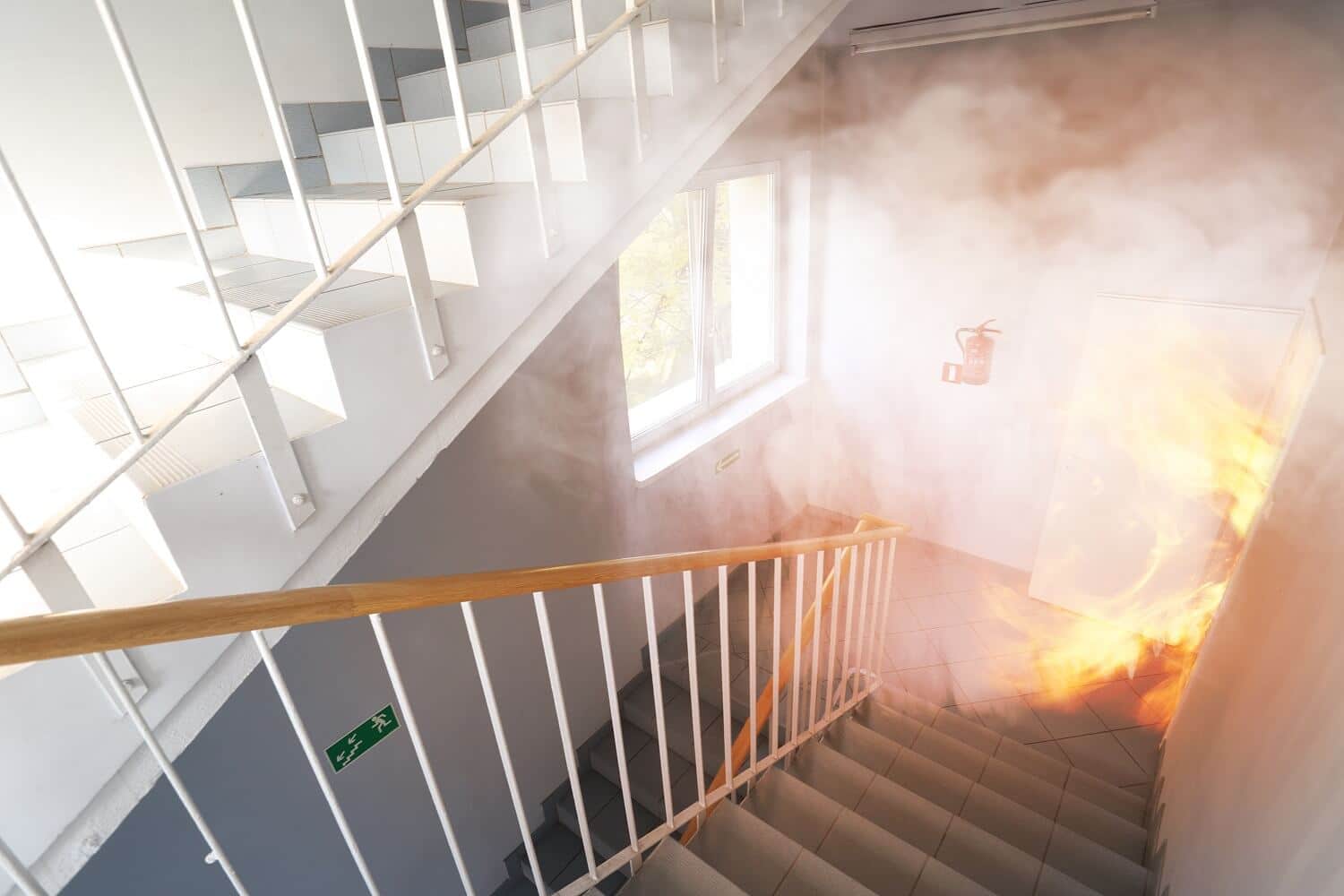Fire Doors: Enhancing Building Safety and Preventing the Spread of Fire
Fire doors play a critical role in ensuring building safety by preventing the spread of fire, blocking smoke and flames, and providing essential escape routes. Made from durable materials such as steel or timber and fitted with fire-resistant seals, these specialized doors compartmentalize the structure, slowing down the fire’s progression and safeguarding lives and property. In this comprehensive article, we will explore the importance of fire doors, the regulations governing their installation and maintenance, and essential glossary terms associated with fire door safety.
Understanding the Importance of Fire Doors and Regulations
Fire doors serve as a vital line of defence against the rapid spread of fire within buildings. By effectively sealing off areas and limiting the movement of smoke and flames, these doors offer crucial protection to occupants and valuable assets. They are engineered with fire-resistant materials and equipped with specialized features like self-closing mechanisms, automatic closing devices, smoke seals, and intumescent seals to ensure optimal fire containment.
The Role of Fire Doors in Building Safety
Fire doors are integral components of building safety systems. They compartmentalize the structure, creating barriers that hinder the spread of fire and limit the damage it can cause. When a fire breaks out in a building, fire doors act as physical barriers, slowing down the fire’s progress and providing occupants with additional time to evacuate safely.
Regulations Governing Fire Doors
To ensure the effectiveness and reliability of fire doors, various regulations have been put in place to govern their installation and maintenance. In England, the Fire Safety Regulations 2022 mandate regular checks of fire doors in multi-occupied residential buildings over 11 meters tall. It is crucial to consult with a qualified fire safety professional and adhere to these regulations to ensure compliance and maintain the integrity of fire doors.

Understanding Fire Resistance and Fire Rating
Fire resistance and fire rating are two important terms associated with fire doors. Fire resistance refers to the ability of a door or other building element to withstand exposure to fire for a specific period without losing its structural integrity. Fire rating, on the other hand, quantifies the length of time a door can resist fire based on specific performance criteria. Fire doors are typically tested and rated according to industry standards, such as the British Standards Institution (BSI) or Underwriters Laboratories (UL).
Self-Closing and Automatic Closing Devices
Self-closing and automatic closing devices are critical features of fire doors that ensure they close automatically in the event of a fire. Self-closing devices utilize mechanical mechanisms, such as door closers, to ensure that the door returns to the closed position after being opened. Automatic closing devices, on the other hand, rely on specialized technologies, such as electromagnetic or pneumatic systems, to close the door when triggered by a fire alarm or detection system.
Smoke Seals and Intumescent Seals
Smoke seals and intumescent seals are integral components of fire doors that help prevent the spread of smoke and flames. Smoke seals are designed to fill the gaps between the door and the frame, effectively sealing off the passage of smoke. Intumescent seals, on the other hand, expand when exposed to high temperatures, creating a barrier that prevents the spread of flames and smoke.
Fire-Rated Hardware: Ensuring Door Integrity
Fire-rated hardware refers to the components and accessories installed on fire doors to maintain their fire-resistant properties. This includes hinges, locks, latches, and other door hardware that have undergone fire testing and are specifically designed for use on fire doors. Using fire-rated hardware is essential to ensure that the overall door assembly maintains its integrity during a fire.
Fire Door Assembly: A Holistic Approach
Fire door assembly encompasses the complete installation of a fire door, including the door leaf, frame, hardware, seals, and other components. It is crucial to follow manufacturer guidelines and industry standards to ensure proper assembly and compliance with fire safety regulations. Consulting with a qualified professional for fire door assembly is recommended to ensure optimal performance and reliability.
Inspection and Maintenance of Fire Doors
Regular inspection and maintenance are essential for the longevity and functionality of fire doors. Fire door inspections involve checking various components, including hinges, latches, seals, and closers, to ensure they are in proper working condition. Any signs of damage or wear should be addressed promptly to maintain the fire door’s effectiveness. It is advisable to consult with a fire safety professional for thorough inspections and maintenance procedures.
Glossary of Fire Door Terms
To better understand the technical aspects of fire doors, it is essential to familiarize ourselves with relevant glossary terms. Below are some key terms associated with fire doors:
| Term | Definition |
|---|---|
| Fire Resistance | The ability of a door or building element to withstand fire for a specified period without losing its structural integrity. |
| Fire Rating | The duration for which a door can resist fire is based on specific performance criteria. |
| Self-Closing | A feature that ensures the door automatically returns to the closed position after being opened. |
| Automatic Closing Devices | Specialized mechanisms that close the door automatically when triggered by a fire alarm or detection system. |
| Smoke Seals | Components that seal gaps between the door and the frame to prevent the passage of smoke. |
| Intumescent Seals | Seals that expand when exposed to high temperatures, creating a barrier against flames and smoke. |
| Fire-Rated Hardware | Components and accessories designed for use on fire doors that maintain their fire-resistant properties. |
| Fire Door Assembly | The complete installation of a fire door, including the door leaf, frame, hardware, seals, and other components. |
| Inspection | The process of regularly checking fire doors for proper functionality and identifying any maintenance or repair needs. |
| Maintenance | The upkeep and repair of fire doors to ensure their continued effectiveness. |
FAQs (Frequently Asked Questions)
Q: How often should fire doors be inspected?
A: Fire doors should be inspected regularly, typically once every six months, to ensure their proper functionality and compliance with fire safety regulations.
Q: Can fire doors be installed in residential buildings?
A: Yes, fire doors are essential for residential buildings, especially those with multiple occupancy or taller than 11 meters. Fire Safety Regulations mandate the installation of fire doors in such buildings to enhance safety.
Q: Are fire doors only made of steel?
A: Fire doors can be made from various materials, including steel and timber. The choice of material depends on factors such as fire resistance requirements, aesthetics, and the specific application.
Q: Can fire doors be customized to match building aesthetics?
A: Yes, fire doors can be customized to match the architectural style and design of a building. Various finishes, veneers, and decorative elements can be applied to fire doors without compromising their fire-resistant properties.
Q: How do fire-rated hardware components differ from regular hardware?
A: Fire-rated hardware components are specifically designed and tested to maintain the fire-resistant integrity of the door assembly. They undergo rigorous fire testing and meet strict industry standards.
Q: Can fire doors be repaired if damaged?
A: In some cases, fire doors can be repaired if the damage is minor and does not compromise their fire-resistant properties. However, it is recommended to consult with a fire safety professional to assess the extent of damage and determine the appropriate course of action.
The Ventrolla verdict
Fire doors are indispensable elements of building safety, providing vital protection against the spread of fire and ensuring the safe evacuation of occupants. By adhering to regulations, conducting regular inspections, and employing qualified professionals, we can maintain the integrity of fire doors and enhance overall fire safety. Remember to consult with a fire safety professional for any specific inquiries related to fire doors or for assistance with installation and maintenance.

